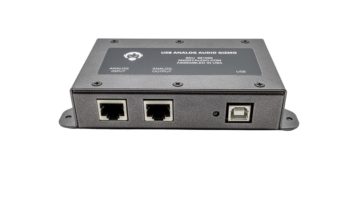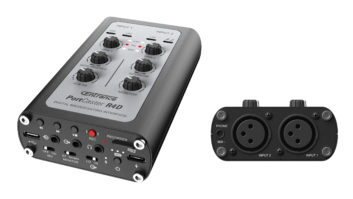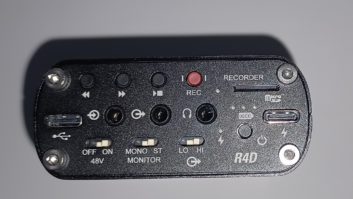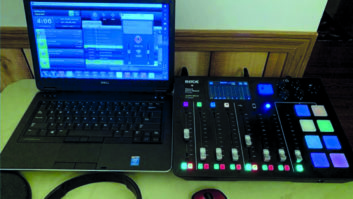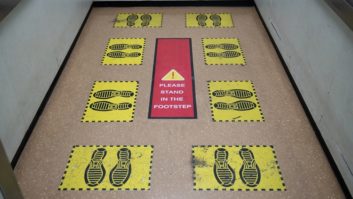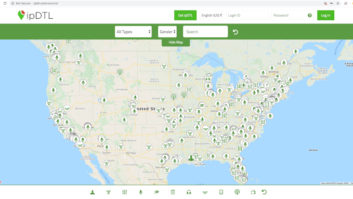One in a series of occasional articles about basic broadcast concepts, for new LPFM broadcasters and others who may be unfamiliar with industry terminology.
A “mix-minus” is a mix of audio channels minus one (or more) of them — subtracted for reasons that will become apparent. It is an important component of broadcast audio. Personnel involved in engineering for on-air broadcast or certain recorded radio program production must understand the practice.
Telephone audio plays an important part in radio. But using a telephone with a nontraditional audio board — the typical inexpensive multipurpose audio mixer — can be a little challenging, and confusing to a novice. Many people who are newer to radio operations or engineering may not understand this concept of mix-minus and how it’s used with a phone coupler, also called a hybrid.
TELEPHONE LINE

This setup allows a standard mixer to be used with phone couplers to provide a mix-minus to callers. Note Aux settings.
The coupler is a device that takes sound from the caller and returns audio to the caller. It grabs or “seizes” the phone call when selected and acts as the interface between the actual telephone line and the console or mixer.
Traditional broadcast (standard radio) consoles often have built-in, dedicated mix-minus outputs. These can be assigned so the caller only hears the sound from certain mics or audio sources (though never their own voice) via the coupler.
When a coupler is connected to an audio mixer, you’ll need to provide a console output to a caller so they can follow what is being said and respond. But you do not want to loop back (or “return”) the caller’s own voice back to them; doing so would create an audio feedback loop.
Most phone couplers provide a short burst of noise when connected to the phone line that acts as a reference for equalizing the audio from the caller for the best quality sound.
Couplers offer a control labeled “null” that helps keep the return audio (to the caller) from remixing back in with the caller’s own voice on the coupler output. If the null didn’t occur, you’d hear the same program material and mics going to the caller “bouncing back” into the console/mixer but sounding tinny (“phone-like”). The null control helps keep this minimized.
So now we know the phone coupler returns sound from the console’s mix-minus to the caller, equalizes the callers audio to the console and provides a null control of audio to/from the coupler.
Some stations find themselves using standard audio mixers as opposed to radio consoles. These mixers are designed for use in a small recording studio, mixing a band or use in a radio program production studio; they were not built for use in a live radio studio environment.
They lack features like speaker muting and monitor, and they also don’t provide automatic mix-minus returns for phone couplers.

The Telos Hx1 hybrid provides the phone interface for the mixer at WDNP(LP).
But this does not mean you can’t use a mixer with a phone coupler; it’s just a matter of figuring out how. Keeping in mind that a mix-minus is the mix without the caller’s own audio, it’s easy to use a mixer’s “aux sends” to make your own mix-minus.
Here’s how. Connect your Aux 1 output to send that audio to your caller. Then turn up all the Aux 1 pots that you want to send to the caller other than the one from the phone coupler’s channel (which would send that the caller’s own voice back to them — defeating the purpose of the mix-minus). If you add a second phone coupler, you can feed that phone coupler from your Aux 2 send and send that output (less their own Aux 2) to that caller.
If you want the callers to hear each other, just be sure the Aux 2 pot for Caller 1 is turned up and turn up Aux 1 for Caller 2. This allows each caller to hear the other without getting their own voice returned.
The picture of a mixer surface shows how Aux 1 and Aux 2 would be adjusted to allow each caller to hear the other but without returning their own audio (assuming that the phone coupler for Caller 1 is wired to Aux 1’s output and the phone coupler for Caller 2 is wired to Aux 2’s output). As phone sources are mono, a single mono pot can be used.
The author is a longtime radio/TV engineer. He helped found WDPE(LP) in Dover/New Philadelphia, Ohio.





